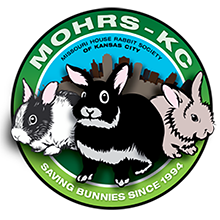The Importance of Hay in Maintaining a Healthy Digestive System in a Rabbit
Understanding The Digestive System of a Rabbit
A rabbit’s digestive system is very similar to that of a horse. Both have long digestive tracts that are specifically set up to break down and process cellulose, in the form of fibrous vegetation, such as grass hay. Since their systems work best with digesting fiber (hay), it is essential for good health that they receive ample amounts of it at all times.
Fiber is critical for a rabbit because the fiber is what stimulates and propels movement in the gastrointestinal tract (GIT). As a rabbit nibbles hay and it passes through the esophagus and into the stomach, it is broken down into smaller particles by acids and enzymes. The stomach muscles then help to turn the food into a mixture called digesta. Digesta then passes from the stomach into the small intestine where most digestion and absorption of nutrition occurs. Continuing on its path through the GIT, the food and fiber (digesta) passes from the small intestine into the large intestine where it is sorted into two parts.
Part 1: Indigestible fiber is further broken down and passes directly into the large intestine, where it is combined with water, and then passes out the anus as fecals (round droppings).
Part 2: Digestible soluble fiber and proteins are further broken down and moved into the cecum, a large pouch capable of holding approximately 10 times the capacity of the stomach. The cecum serves as a fermenting area where protozoa, bacteria, and yeast further break down the digesta, producing vitamins, proteins and nutrients. Some of these nutrients are absorbed directly into the wall of the cecum. After approximately 8 hours in the cecum, some of the digesta is excreted in the form of cecotrophs. Cecotrophs are small moist, soft pellets that contain vitamins and nutrients vital to the good health of a rabbit. They look like very small grape clusters and are coated in a mucous membrane, which protects them. If you accidentally squash cecotrophs, they have a pungent smell. These cecotrophs are then re-ingested where the mucous membrane protects them as they pass through the entire GIT again, providing additional nutrients vital to a rabbit.
When rabbits are fed only small amounts of grass hay (or no grass hay), and larger amounts of carbohydrates, glucose, finely ground feed, or indigestible protein, the GIT (specifically the cecum) can become overloaded and the delicate bacterial balance can become upset. When this happens an overgrowth of bad bacteria take over which produce toxins that are harmful and sometimes fatal to a rabbit. If this condition (GI stasis, or ileus) develops, consider it an emergency. Ileus is excruciatingly painful and can kill a rabbit if not treated immediately by a rabbit savvy veterinarian.
Therefore a key to helping a rabbit live a long and healthy life is in feeding the correct amount of indigestible fiber and nutrition. While pellets do contain smaller particles of fiber, it has been shown that the larger indigestible fiber found in grass hay is more effective in moving food through the digestive tract of a rabbit than the pulverized fiber found in pellets. Because grass hay fiber stimulates good gut motility (rate at which food moves through the GIT), it can also help reduce the amount of hair that accumulates in the GIT, and may also help protect against enteritis. [Cheeke, 1987, 181]
 MOHRS
MOHRS